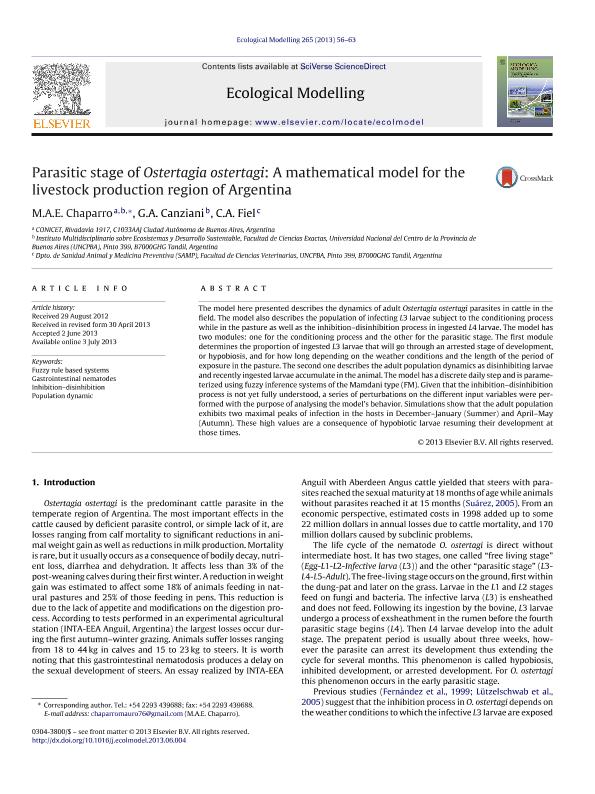Artículo
Parasitic stage of Ostertagia ostertagi: A mathematical model for the livestock production region of Argentina
Fecha de publicación:
07/2013
Editorial:
Elsevier Science
Revista:
Ecological Modelling
ISSN:
0304-3800
Idioma:
Inglés
Tipo de recurso:
Artículo publicado
Clasificación temática:
Resumen
The model here presented describes the dynamics of adult Ostertagia ostertagi parasites in cattle in the field. The model also describes the population of infecting L3 larvae subject to the conditioning process while in the pasture as well as the inhibition–disinhibition process in ingested L4 larvae. The model has two modules: one for the conditioning process and the other for the parasitic stage. The first module determines the proportion of ingested L3 larvae that will go through an arrested stage of development, or hypobiosis, and for how long depending on the weather conditions and the length of the period of exposure in the pasture. The second one describes the adult population dynamics as disinhibiting larvae and recently ingested larvae accumulate in the animal. The model has a discrete daily step and is parameterized using fuzzy inference systems of the Mamdani type (FM). Given that the inhibition–disinhibition process is not yet fully understood, a series of perturbations on the different input variables were performed with the purpose of analysing the model's behavior. Simulations show that the adult population exhibits two maximal peaks of infection in the hosts in December–January (Summer) and April–May (Autumn). These high values are a consequence of hypobiotic larvae resuming their development at those times.
Archivos asociados
Licencia
Identificadores
Colecciones
Articulos(CCT - TANDIL)
Articulos de CTRO CIENTIFICO TECNOLOGICO CONICET - TANDIL
Articulos de CTRO CIENTIFICO TECNOLOGICO CONICET - TANDIL
Citación
Chaparro, Mauro Alejandro Eduardo; Fiel, Cesar Alberto; Canziani, Graciela Ana; Parasitic stage of Ostertagia ostertagi: A mathematical model for the livestock production region of Argentina; Elsevier Science; Ecological Modelling; 265; 7-2013; 56-63
Compartir
Altmétricas




